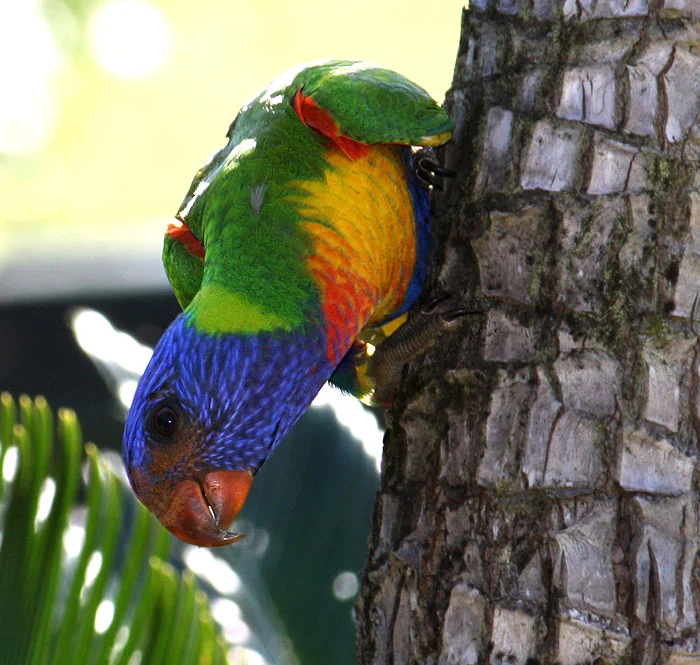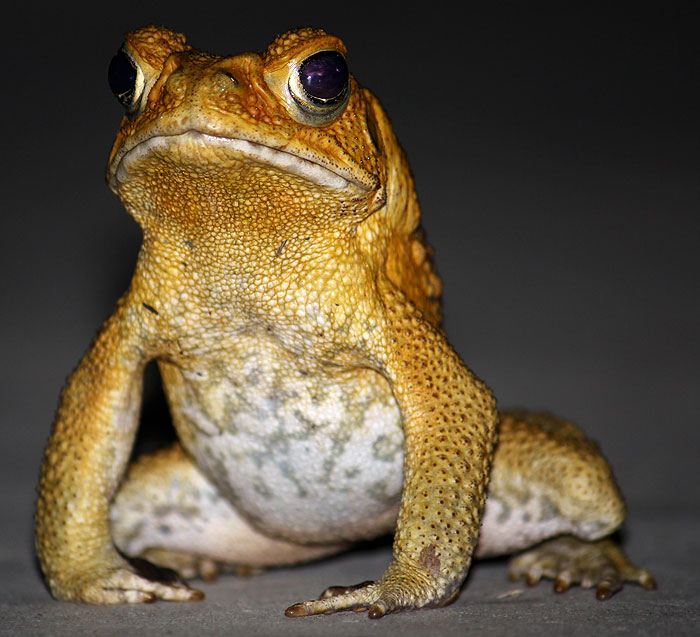Garden Birds of North QLD
Love is in the air - and I mean that almost literally. The Sunbirds successfully raised their brood and with barely a pause have started on a second family. Interestingly they even went to the trouble of building a whole new nest in another site - around 3 meters from the original. I'm assuming they do this as the first nest may have become fouled with bird lice etc.
But it could also be to lessen the danger of discovery by predators.
When we first discovered the empty nest, we feared the worst as it appeared to have been shredded but we soon heard the plaintive peeps of the chicks and were pleased to see that both were alive and being fed - shuttle style, by both parents in a nearby shrub.
I'm still not 100% convinced that the nest wasn't raided and that the chicks were only just on the cusp of being able to leave their shelter. However, it was a real treat being able to watch this little family.
Not to be outdone, we also had a Lewin's Honeyeater nest just outside our door in some passion fruit vines - unfortunatly this nest was abandoned after a few days of sitting ... below is my guess as to the reason why.
Our resident Night Tiger is quite the predator of small birds - and while I can't say I enjoy this fact, the snake is only doing what it needs to do to survive and in this instance I can't even prove that the Honeyeaters nest was exploited by it.
So the snake continues to live in our ceiling unmolested. She is, after all, a beautiful animal in her own right - and, I admit, a personal favourite guest.
We also have a lovely pair of Helmeted Friarbirds who are nesting somewhere close by and seem to be becoming used to our presence in their lives - I really enjoy these guys and if there is ever any doubt in your mind as to the link between reptiles and birds, one look at this little fellow should put such doubts to rest.
Lorikeets are some of the most comical, intelligent and noisy birds I know of. Lately two pairs have been making frequent stops in the garden and they're great for a laugh. If we sit still and quiet they will often land on the outside table and quizzically examine whatever happens to be on it - much to everyone's amusement.
Note the red powdery looking substance on the face and beak - whatever it's been eating the Fiarbird seems to enjoy also. No doubt it's some form of pollen eh?
We've also had some Welcome Swallows attempting to build a nest - however the male Sunbird was less than impressed with their efforts and after some fairly serious bickering the Swallows have moved on ... I have pics of them here somewhere and when I find em - I'll post 'em.
... 'till then - take care
But it could also be to lessen the danger of discovery by predators.
 |
| Fledgling Sunbird chick |
When we first discovered the empty nest, we feared the worst as it appeared to have been shredded but we soon heard the plaintive peeps of the chicks and were pleased to see that both were alive and being fed - shuttle style, by both parents in a nearby shrub.
 |
| Female Sunbird with her young |
I'm still not 100% convinced that the nest wasn't raided and that the chicks were only just on the cusp of being able to leave their shelter. However, it was a real treat being able to watch this little family.
 |
| Honeyeater Meliphaga lewiniion nest |
Not to be outdone, we also had a Lewin's Honeyeater nest just outside our door in some passion fruit vines - unfortunatly this nest was abandoned after a few days of sitting ... below is my guess as to the reason why.
 |
| Brown Tree Snake (Boiga irregularis) |
Our resident Night Tiger is quite the predator of small birds - and while I can't say I enjoy this fact, the snake is only doing what it needs to do to survive and in this instance I can't even prove that the Honeyeaters nest was exploited by it.
So the snake continues to live in our ceiling unmolested. She is, after all, a beautiful animal in her own right - and, I admit, a personal favourite guest.
 |
| Helmeted Friarbird (Philemon buceroides) |
We also have a lovely pair of Helmeted Friarbirds who are nesting somewhere close by and seem to be becoming used to our presence in their lives - I really enjoy these guys and if there is ever any doubt in your mind as to the link between reptiles and birds, one look at this little fellow should put such doubts to rest.
 |
| Rainbow Lorikeet, (Trichoglossus haematodus) |
Lorikeets are some of the most comical, intelligent and noisy birds I know of. Lately two pairs have been making frequent stops in the garden and they're great for a laugh. If we sit still and quiet they will often land on the outside table and quizzically examine whatever happens to be on it - much to everyone's amusement.
Note the red powdery looking substance on the face and beak - whatever it's been eating the Fiarbird seems to enjoy also. No doubt it's some form of pollen eh?
We've also had some Welcome Swallows attempting to build a nest - however the male Sunbird was less than impressed with their efforts and after some fairly serious bickering the Swallows have moved on ... I have pics of them here somewhere and when I find em - I'll post 'em.
... 'till then - take care
Since early March 2012, wild rainbow lorikeets (Trichoglossus haematodus) have been reported as dead or sick at a number of sites in the eastern and north-eastern suburbs of Melbourne. At one site, over 32 deaths were recorded. Sick birds have shown signs such as diarrhoea, vomiting, regurgitation, and lethargy. In some cases, hand feeding of lorikeets has occurred at the sites.
Investigations have been undertaken by veterinary staff at the University of Melbourne Faculty of Veterinary Science and Victorian Department of Primary Industries. Read More
Investigations have been undertaken by veterinary staff at the University of Melbourne Faculty of Veterinary Science and Victorian Department of Primary Industries. Read More






Comments
D
Keep in touch and let me know what's happening in you neck of the woods eh?
Take care - Paul
Post a Comment